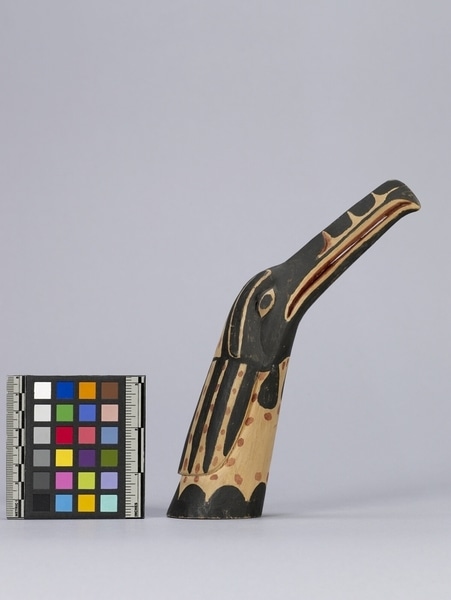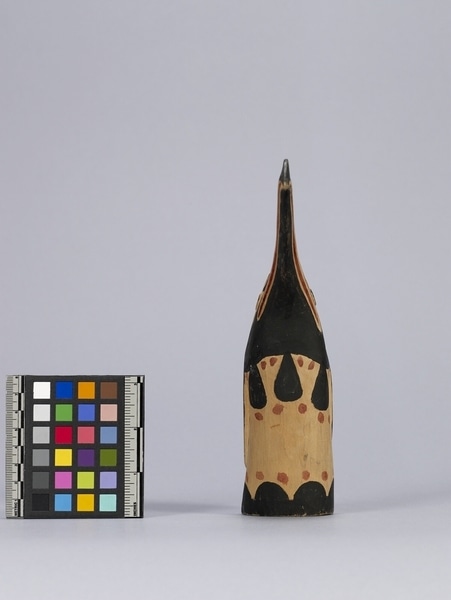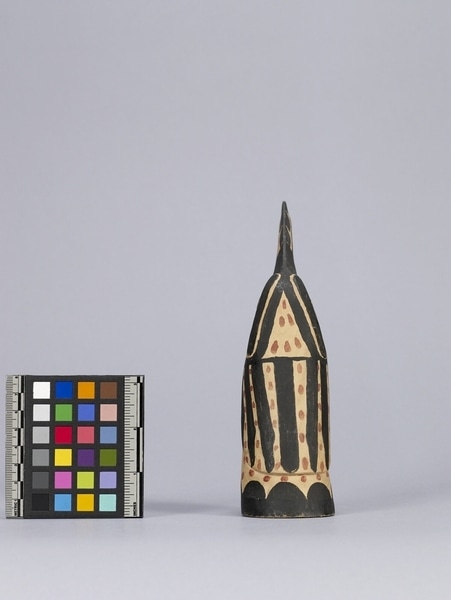Figure Item Number: Nb9.52 from the MOA: University of British Columbia




Description
Carving of a raven-like mask and dancer, head and body continuous. Elongated raised beak, wing wrapped around back. Hole in base. Red and black watercolour on unfinished wood.
History Of Use
Carved as the top of a walking stick, probably around 1942.
Narrative
Dick Snow’s grandson, Chief Jeffrey Snow (7ANISPUXALS), remembers that his grandfather carved these miniatures for sale, rather than something like masks, to prevent non-Native people from disrespecting the Smayusta (family-owned ancient origin stories) of the objects. Jeffrey Snow, along with Marshall Hans (Komokwa, also Dick Snow’s grandson), remember Dick Snow making his own pigment paints out of mineral rocks that he gathered himself from around the Bella Coola Valley. Dick Snow sold his carvings right from his house in Bella Coola, filling a curio cabinet in his living room with work and turning it to face out from the window. Customers would come and look in at his offerings, buying the work directly from him.
Specific Techniques
The black paint was made out of pulverized black stone mixed with salmon egg, and the burgundy/red pigment was made with pulverized red rocks, salmon eggs, and sometimes mixed with red dye made from alder that the artist's wife used to dye cedar bark. Paint is not watercolor, but native pigments made from minerals and tannins.
Iconographic Meaning
Depicts a Hao Hao dancer in a kneeling position, which mirrors how dancers pose while stationary in the dance.
Item History
- Made by Dick Snow (Maker) in Bella Coola, British Columbia, Canada during 1942
- Owned by Grant Edwards before September 19, 1979
- Received from Grant Edwards (Donor) on September 19, 1979
What
Who
- Culture
- Nuxalk
- Creator
- Dick Snow (Maker)
- Previous Owner
- Grant Edwards
- Received from
- Grant Edwards (Donor)
Where
- Holding Institution
- MOA: University of British Columbia
- Made in
- Bella Coola, British Columbia, Canada
When
- Creation Date
- during 1942
- Ownership Date
- before September 19, 1979
- Acquisition Date
- on September 19, 1979
Other
- Item Classes
- carvings & sculpture
- Condition
- good
- Current Location
- Case 12
- Accession Number
- 0560/0002